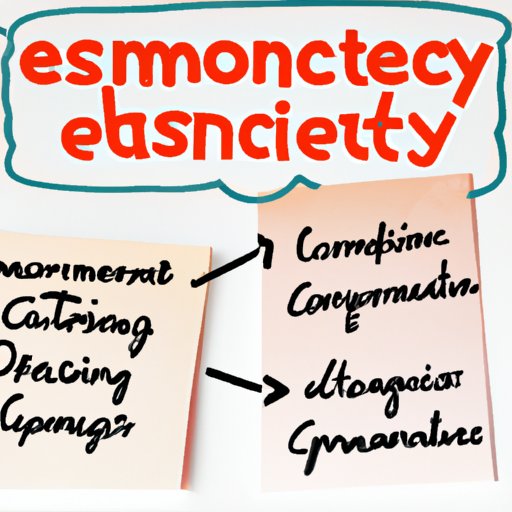
I. Introduction
If you are an artist, crafter, or lover of handmade goods, you may already be familiar with Etsy. This popular e-commerce platform has been making waves since its inception in 2005, providing a welcoming community for sellers and buyers alike. With millions of users and a global audience, Etsy is a great place to start a small business selling handmade or vintage items. In this article, we’ll give you a step-by-step guide on how to start a successful business on Etsy, from setting up your shop to promoting your products and identifying top-selling niches.
II. Benefits of Starting a Business on Etsy
There are many advantages to using Etsy as your selling platform. First and foremost, it gives you access to a huge audience of people who are looking for unique, handmade or vintage items. You’ll benefit from Etsy’s established reputation as a marketplace for quality goods and its easy-to-use interface. Plus, starting a business on Etsy is relatively low-cost, and you don’t need to invest in your own website or develop your own e-commerce platform. This makes it an excellent option for entrepreneurs who want to take their first steps in online retail.
III. Setting up an Etsy Shop
Before you can start selling on Etsy, you’ll need to create your own shop. This is a straightforward process that involves creating a shop name, filling out your policies (such as shipping, refunds and returns), and setting up payment and shipping methods. It’s essential to fill out your shop profile as completely as possible so that buyers can learn more about you and your products. You’ll also want to choose an eye-catching banner and profile picture that reflects your brand and style.
IV. Optimizing Product Descriptions and Photos
When it comes to selling online, your product descriptions and photos are critical components of your listing. Your descriptions should be detailed and accurate, highlighting the unique features and benefits of your product. Be sure to use keywords that will help your listing appear in searches, and include measurements and other relevant details. Your photos should be clear, bright, and show the item from multiple angles. You may want to invest in a good camera or photo editing software, or consider hiring a professional photographer.
V. Building a Consistent Brand Identity
Branding is key to making your shop stand out from the competition. You want to create a consistent, recognizable brand identity that appeals to your target audience and represents your business. This means choosing a color palette, typography, and visual elements that work together to create a cohesive look. You’ll want to create a logo that fits with your brand and use branding elements consistently throughout your shop, such as on business cards, packaging, and social media.
VI. Pricing Strategies for Etsy Products
Pricing is an essential component of your Etsy business. You want to make sure you’re pricing your products at a level that covers your costs and allows you to make a profit. Be sure to factor in Etsy fees, listing fees, and shipping costs when setting prices. You may want to experiment with different pricing strategies, such as pricing for volume or pricing for profit. Keep in mind that pricing can be a delicate balance, and you don’t want to price yourself out of the market or undervalue your time and effort.
VII. Promoting an Etsy Shop
Marketing is an essential part of driving traffic and sales to your Etsy shop. You’ll want to make sure you have a strong social media presence and use it to promote your products and engage with potential customers. You can also use paid advertising through Etsy to increase visibility and maximize reach. Collaborating with other Etsy sellers can be a great way to cross-promote your products and reach a wider audience. You may also want to participate in events such as fairs and festivals to get out there and meet people face-to-face.
VIII. Identifying Top-Selling Products and Niches
Finally, it’s important to keep your finger on the pulse of what’s selling well on Etsy and in your particular niche. Researching emerging trends and identifying profitable niches can help you stay ahead of the curve and capitalize on new opportunities. Be sure to use Etsy’s search features to see what’s popular, and check out successful Etsy shops in your area of interest for inspiration. Remember, it’s not about copying what’s already out there, but finding a unique angle that resonates with your customers.
IX. Conclusion
Starting a business on Etsy can be a rewarding and fulfilling experience, but it takes time, effort, and dedication to succeed. By using the tips and guidance provided in this article, you’ll have a solid foundation for building your own successful Etsy shop. Remember to stay true to your brand and values, and always strive to provide top-quality products and customer service. With a little patience and persistence, you can create a thriving business that brings joy and creativity to others.




